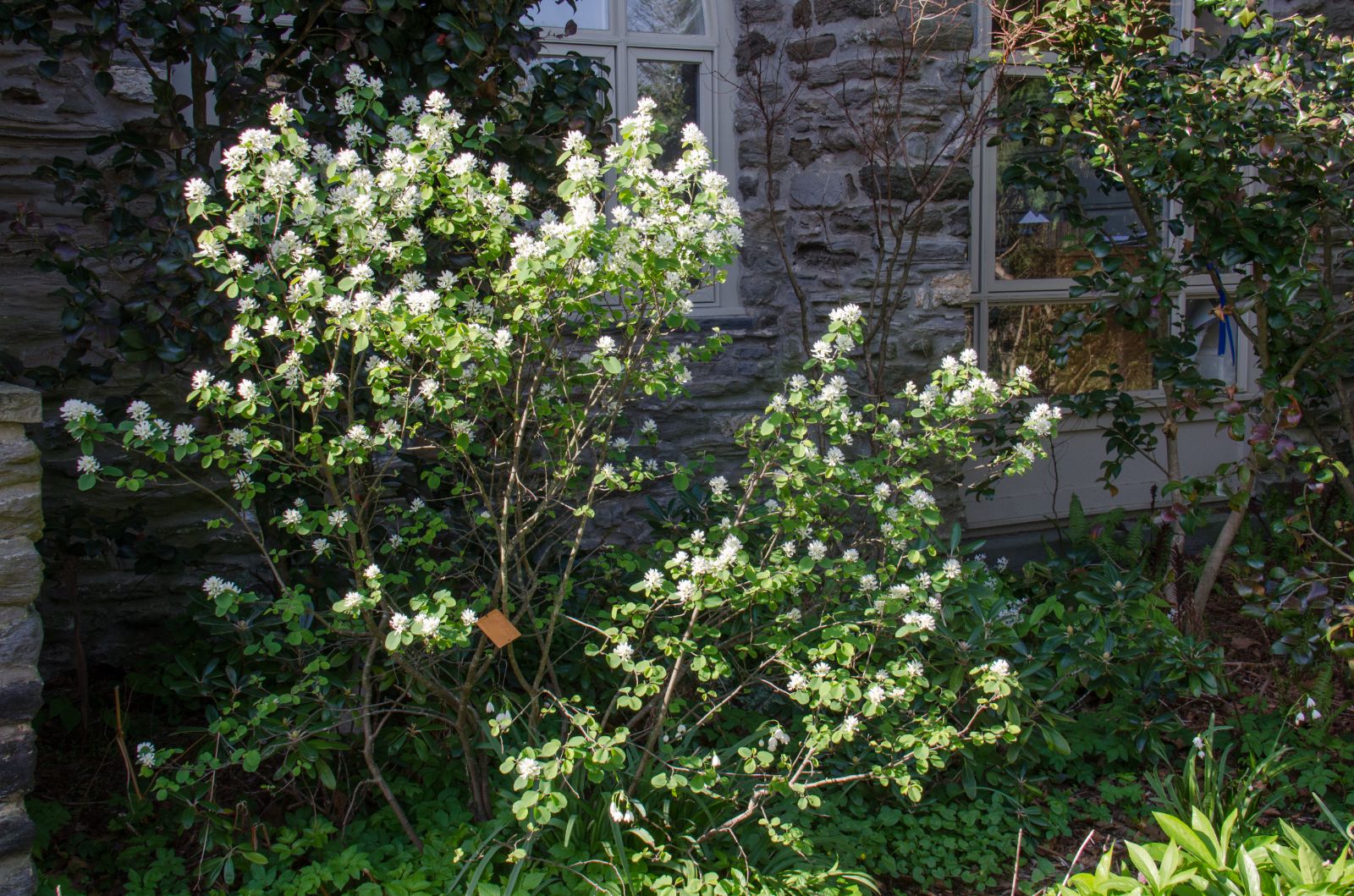Amelanchier rotundifolia
Credits
Article from Bean's Trees and Shrubs Hardy in the British Isles
Recommended citation
'Amelanchier rotundifolia' from the website Trees and Shrubs Online (treesandshrubsonline.
Genus
Synonyms
- Crataegus rotundifolia Lam.
- A. ovalis Med.
- A. vulgaris Moench
- Mespilus amelanchier L.
Infraspecifics
A shrub to about 10 ft high, more rarely a small tree; young growths woolly at first, soon glabrous. Leaves oblong, roundish oval or obovate, 1 to 2 in. long, 5⁄8 to 11⁄4 in. wide, obtuse and often mucronate at the apex, rounded to slightly cordate at the base, rather coarsely toothed, hairy and pure white beneath when young, later glabrous. Racemes carrying up to eight rather large white flowers, often 11⁄2 in. wide, with narrowly oblanceolate petals. Inflorescence branches woolly at first, as is the calyx-tube, becoming glabrous. Sepals triangular. Styles five, free to the base, short, their tips about level with the rim of the calyx-tube. Fruits at first red, then black with a purplish bloom, about the size of a black currant, edible but not very palatable. Bot Mag., t. 2430.
Native of the mountains of southern and central Europe, north-west Africa, Asia Minor, the Lebanon, the Crimea and the Caucasus; of unrecorded introduction, but in cultivation in Britain by early in the 18th century. It is a pretty shrub, flowering in late April or early May, with flowers among the largest in the genus.
This amelanchier has in recent times been treated by many botanists under the name A. ovalis Med. But it was first described by Lamarck in 1788 as Crataegus rotundifolia and the epithet chosen by him must be used.
subsp. integrifolia (Boiss. & Hohen.) Browicz A. integrifolia Boiss. – Leaves entire or almost so. Inflorescence with up to five flowers only. Native of Asiatic Turkey, the Caucasus and northern Iraq.
A cretica (Willd.) DC.
Synonyms
Pyrus cretica Willd.
A. ovalis var. cretica (Willd.) Fiori


